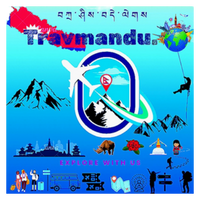Chitwan National Park: The wildlife Heaven
- Tennzin Sherpa
- Jul 8
- 2 min read
Updated: Jul 9

Established : 1973
Park Area : 952.63 sq.km.
Buffer Zone Area : 729.37 sq.km.
Chitwan National Park is situated in south central Nepal in the sub tropical lowlands of the inner terai of Chitwan, Makawanpur, Parsa and Nawalparasi districts. It lies between 27°16.56’- 27°42.14’ Latitudes and 83°50.23’-84°46.25’ Longitudes. The altitude ranges from 110m to 850m above sea level. The park is bounded by the Rapti and Narayani River in the north, Parsa Wildlife Reserve in the east and Madi settlements and India border in the south.
🌦️ Climate of Chitwan National Park
Chitwan National Park experiences a tropical monsoon climate with high humidity year-round and three distinct seasons that shape both the landscape and the wildlife experience:
☀️ Summer (March to Early June)
Hot and dry, with temperatures rising up to 43°C in May
Lowest humidity in March, despite the heat
Nights in April can be surprisingly cool, offering some relief
🌧️ Monsoon (Mid-June to Late September)
Heavy rainfall brought by moisture-laden winds from the Bay of Bengal
Over 80% of the annual 2,500 mm of rain falls during this period
Rain usually comes in short, intense afternoon showers
Roads may become impassable, and rivers often flood
❄️ Winter (October to February)
Cool and dry, with average daytime temperatures around 25°C
January is the coldest month, with nighttime temperatures dropping close to freezing
Clear skies in November offer stunning views of the Himalayas
Morning dew is common, sometimes mistaken for rain
📅 Best Time to Visit
October to March is ideal for wildlife viewing and pleasant weather
Late January allows locals to harvest thatch grass, improving visibility for safaris
🌿 Why Chitwan National Park Is a Must-Visit and Famous
Chitwan National Park isn’t just a destination—it’s an experience that blends wildlife, culture, and adventure in one of Nepal’s most vibrant ecosystems. Here’s why it stands out:
🐘 Wildlife Wonderland
Home to rare and endangered species like the one-horned rhinoceros, Bengal tiger, and Asian elephant
Over 540 bird species, including the Bengal florican and giant hornbill
Thrilling safaris offer close encounters with nature in its rawest form
🧭 UNESCO World Heritage Site
Designated in 1984 for its outstanding biodiversity and conservation success
A model for sustainable tourism and community-based conservation
🧡 Cultural Richness
Deeply rooted Tharu traditions, dances, and cuisine add a human heartbeat to the jungle
Visitors can explore Tharu villages, museums, and participate in cultural programs
🚣♀️ Adventure Activities
Jeep safaris, canoe rides, jungle treks, and elephant bathing
Ideal for families, photographers, and nature lovers alike
🌱 Scenic Beauty & Serenity
Lush Sal forests, towering elephant grass, and tranquil Rapti River views
A peaceful escape from city life, perfect for rejuvenation
In short, Chitwan is famous because it’s where nature, culture, and conservation converge. It’s not just a park—it’s Nepal’s living, breathing jungle heart.



Comments